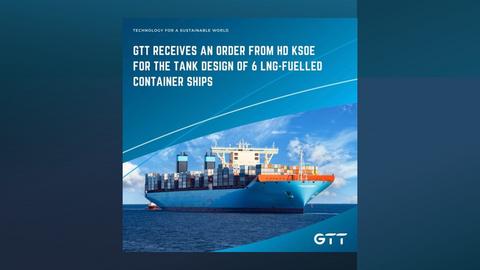Publications
FOCUS 71: Cutting Down On Carbon Footprint In Maritime Shipping

Stéphane Courquin, Chief Executive Officer, APL, and Senior Vice President – Asia Region at CMA CGM Group talks about how the company is innovating energy transition in the industry.
Please tell us about CMA CGM's operational activities in Singapore and the region.
In 41 years, the CMA CGM Group has become a major player in international shipping, which represents more than 90% of goods exchanged around the world. Recently, CMA CGM undertook a major strategic transformation with the acquisition of CEVA Logistics, a world leader in the sector.
The CMA CGM Group is a transport and logistics market leader in Asia Pacific, where it employs more than 14,000 people with CEVA Logistics. Since 2016, CMA CGM has established its Regional Hub in Singapore, where it offers more than 100 services per week thanks to its best-in-class network of Ocean Alliance, North-South and short-sea lines. CEVA Logistics has also established its Centre of Logistics Excellence in Singapore.
What are the biggest threats to the climate from the maritime industry, and how is the industry re-innovating itself to provide more sustainable solutions?
Strongly committed to reducing its carbon footprint, the Group has reduced its CO2 emissions per container transported by 50% between 2005 and 2015 and has set up an ambitious plan to reduce emissions by a further 30% between 2015 and 2025.
In addition to its ground-breaking commitment in favor of liquefied natural gas, the Group launched in March 2019 the first partnership of its kind with IKEA and the GoodShipping program to test and develop the use of a marine biofuel oil. A world premiere, this ongoing partnership led to an initial test this past spring on the transatlantic voyage of the CMA CGM WHITE SHARK.
The biofuel oil used is entirely derived from sustainable forestry residues and from used cooking oil. It improves the carbon footprint and significantly reduces sulphur oxide emissions.
In addition, CMA CGM has also pioneered the development of innovative and environmentally friendly technologies over the past years. For example, the CMA CGM fleet features “Fast Oil Recovery System” to limit the risk of hydrocarbon pollution if a vessel runs aground and double hull protection to protect the marine environment; multiple-chamber compactors to replace waste incinerators; and an approved ballast water treatment system that protects marine biodiversity from all extraneous organisms by filtering and passing water through a UV mechanism.
In August 2019, Chairman of the CMA CGM Group's Board of Directors, Rodolphe Saadé, announced a turning point in the shipping industry: the CMA CGM fleet will not use the Northern Sea Route so as not to jeopardize the Arctic environment, home to a unique and still largely unknown biodiversity. With this decision, CMA CGM has made the firm choice to protect the environment and the planet’s biodiversity despite the major competitive advantage this route would provide for shipping companies.
What is the low sulphur IMO 2020 regulation?
The International Maritime Organization’s new Low Sulphur Regulation will enter into force on January 1st 2020, and will require all shipping companies to reduce their sulphur emissions by 85%.
This new regulation aims to reduce the environmental impact of the industry and significantly improve air quality, an initiative in which the CMA CGM Group has been involved for more than 15 years.
As such, the Group has chosen to favor the use of 0.5% fuel oil for its fleet, and use LNG to power some of its future containerships.
How does liquefied natural gas reduce pollution and contribute to the overall welfare of the climate?
LNG is a clean energy, currently considered as the least polluting type of fossil fuel. A substitute for fuel oil, LNG reduces greenhouse gases emissions and improves air quality by limiting polluting emissions.
A real technological breakthrough contributing to environmental protection, LNG indeed allows for reductions in emissions over existing fuel oil-powered ships: 99% reduction in sulphur oxides and fine particles emissions, up to 85% reduction in nitrogen oxides emissions, and around 20% reduction in CO2 emissions.
In addition, the Energy Efficiency Design Index (EEDI), which measures the environmental footprint of a vessel, is improved by 20% compared to a conventional vessel.

Interview with Stéphane Courquin, Chief Executive officer, APL, and Senior Vice President- Asia Region at CMA CGM Group for FOCUS #71. To read more articles from this issue, download your digital copy here


